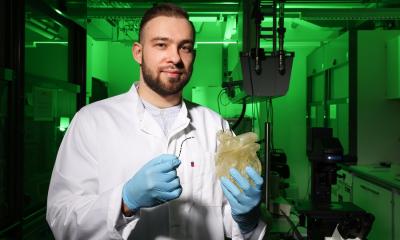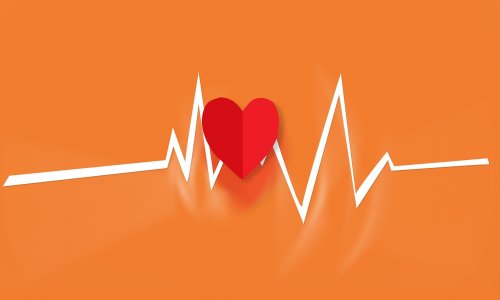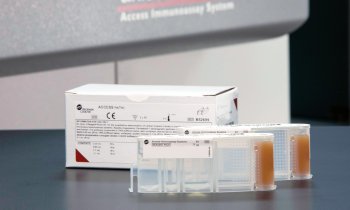© sudok1 - stock.adobe.com
News • Cardiology consensus update
Atrial fibrillation: Agreement on standards for catheter ablation
An international consensus statement on how to treat atrial fibrillation with catheter or surgical ablation is presented at EHRA 2024, a scientific congress of the European Society of Cardiology (ESC).
The document is now published in EP Europace.
Lead author Dr. Stylianos Tzeis said: “Ablation is the most effective way to prevent recurrences of atrial fibrillation and delay progression to more advanced forms. Pioneering techniques have emerged since the previous consensus in 2017, requiring new advice on who should receive this procedure and how to perform it in the safest and most effective manner.”
Atrial fibrillation is the most common cardiac arrhythmia, affecting 2% of individuals worldwide. The number of people with the disorder has risen three-fold over the last 50 years and is expected to increase further – mainly due to population ageing and unhealthy lifestyles – reaching 14 million by 2060 in the European Union alone. It is estimated that approximately one in three White and one in five Black individuals will develop atrial fibrillation during their lifetime.
Technological innovations have made catheter ablation safer and more effective than ever before
Stylianos Tzeis
Atrial fibrillation has a significant impact on people’s lives. Symptoms include palpitations, fatigue, shortness of breath, dizziness, and fainting. Compared to their peers without the condition, people with atrial fibrillation are twice as likely to be admitted to hospital, five times more likely to have a stroke, three times more likely to develop heart failure, and twice as likely to die prematurely.
Catheter ablation of atrial fibrillation is an important treatment option for maintaining a normal heart rhythm and reducing arrhythmia-related symptoms. Ablation is a procedure which uses burning, freezing, or high energy electrical pulses (called electroporation) to inactivate the electrical triggers causing abnormal rhythms. It is typically a one- to two-hour, minimally invasive procedure in which a catheter is inserted into a blood vessel in the groin and advanced into the heart, with patients going home the same or next day.
The new document sets out best practice standards and practical advice on which patients should receive ablation, how to perform the procedure, and how to manage patients before, during and afterwards. A healthy lifestyle is advised to reduce the risk of developing atrial fibrillation and to lower the number of recurrences.
- Catheter ablation is beneficial as first-line treatment in patients with symptoms and recurrent atrial fibrillation. It is also beneficial in symptomatic patients with recurrent paroxysmal or persistent atrial fibrillation who are resistant or intolerant to at least one antiarrhythmic drug. Patients with atrial fibrillation and heart failure, a condition in which the heart muscle cannot pump enough blood to meet the body's needs, benefit from ablation to alleviate symptoms, increase the heart’s strength, and improve their prognosis.
- Before the procedure, patients should have an electrocardiogram (ECG) and echocardiogram (ultrasound of the heart) to check the heart’s rhythm and function. Some patients need computed tomography or transoesophageal echocardiography to exclude the presence of a blood clot in the heart. Blood thinners should not be interrupted before catheter ablation and patients should receive specific instructions from their healthcare provider on continuing their medication.
- After the procedure, all patients should receive anticoagulation for at least two months. Prolonged anticoagulation may be required depending on the risk of blood clots. Antiarrhythmic drugs are advised for some patients to prevent arrhythmia recurrences early after the procedure. Complications following catheter ablation are uncommon but can include stroke, pericardial tamponade (fluid accumulation around the heart), transient ischaemic attack, and vascular complications at the access site in the groin. The risk of death is extremely low (0.05-0.1%).
Dr. Tzeis said: “Technological innovations have made catheter ablation safer and more effective than ever before. For example, we now have pulsed field ablation which uses high energy electrical pulses to treat atrial fibrillation without damaging the nerves or oesophagus. We can also use intracardiac echocardiography to guide and facilitate the procedure with real-time visualisation of the cardiac structures being treated.”
The international consensus statement was developed by the European Heart Rhythm Association (EHRA), a branch of the ESC; the Heart Rhythm Society (HRS); the Asia Pacific Heart Rhythm Society (APHRS); and the Latin American Heart Rhythm Society (LAHRS). It is also published in Heart Rhythm, the official journal of the HRS, Journal of Arrhythmia, the official journal of the APHRS, and Journal of Interventional Cardiac Electrophysiology, the official journal of the LAHRS.
Source: European Society of Cardiology
08.04.2024











